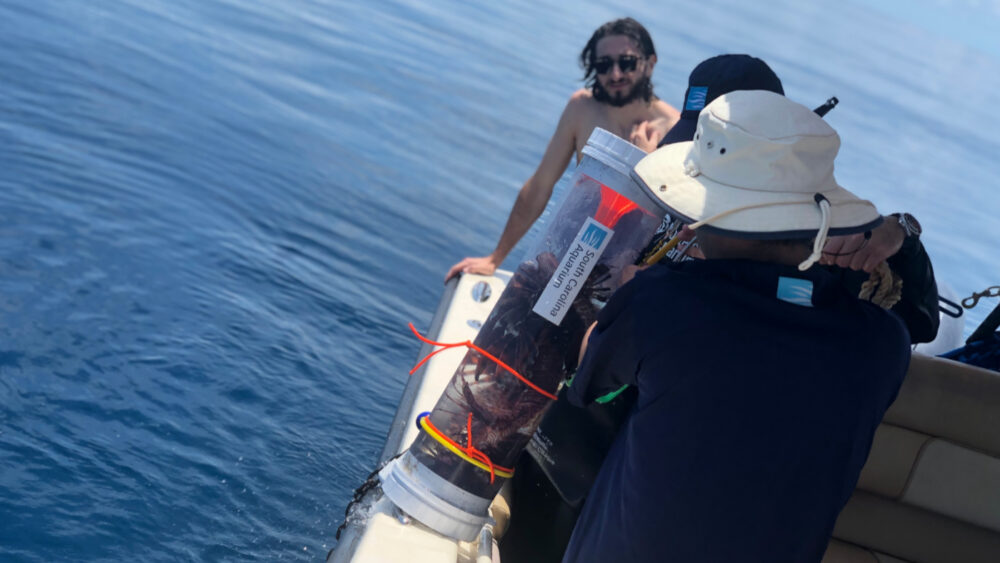“This is the first time we’ve ran out of lionfish to cull before we ran out of bottom time,” Markus declares as he’s back on the water’s surface, doffing dive gear.
Markus was just finishing up a dive offshore at Marine Protected Area 53 (MPA 53) with Arnold, principal investigator for Reef Research. For the past 18 months, the dive team at the Aquarium have been participating in a formalized game of “I Spy” during their dives, spending their time tallying up and identifying fish populations on two MPAs located 40+ miles offshore. In the midst of their counts, they have also been strategically removing, or culling, invasive red lionfish (Pterois spp.) from two of the four corners of each MPA.
Why are they removing fish from a marine protected area, you might ask? Because they don’t belong there in the first place – or anywhere in the Atlantic, for that matter. Lionfish were released into the ocean years ago and have wreaked havoc on native species since. These guys have no natural predators and a wicked defense mechanism: venomous spines disguised as decorative fins all around their body. As for their appetite? Let’s just say lionfish can never be fully satisfied when their stomach can expand 30 times its size. It’s no wonder lionfish populations have skyrocketed, taking down tons of younger native fish as prey in the process.
That’s why Arnold, Markus and others are adamant about studying and participating in lionfish removal efforts through Reef Research. Can these actions actively help other species grow?
Their scuba tanks only allow for 30 minutes of diving at MPA 53. In that time period, they tag team their efforts. One diver will spend their time observing the fish around them, identifying each species and marking their abundance. The other diver spends their time searching for the invasive red lionfish. Normally, they try and cull as many lionfish as they can before they run out of air – or what’s left of their “bottom time.” On this dive, for the first time ever, they can’t see any more lionfish lurking on the reef corner, with time still to spare.
“We only brought up six lionfish this round, but one of these is the biggest I think I’ve seen out here,” Arnold says with excitement. “It’s a good sign that we’re running out of lionfish to cull before we run out of air. Sure, it’s not scientifically proven just yet, but seeing less lionfish and more juvenile fish shows me we’re hopefully making an impact.”
As Arnold said, we don’t know just yet if Reef Research efforts are definitively helping protect native fish populations against lionfish invaders. But what they encountered on this dive seems like it could be a step in the right direction. Stay tuned as Arnold embarks on a new endeavor for Reef Research in the coming months – formally analyzing all fish survey data, to see if this data from the past 18-months-worth of dives (and counting) points out trends in species abundance of natives with or without lionfish present.
Want to take deep dive into Reef Research?








